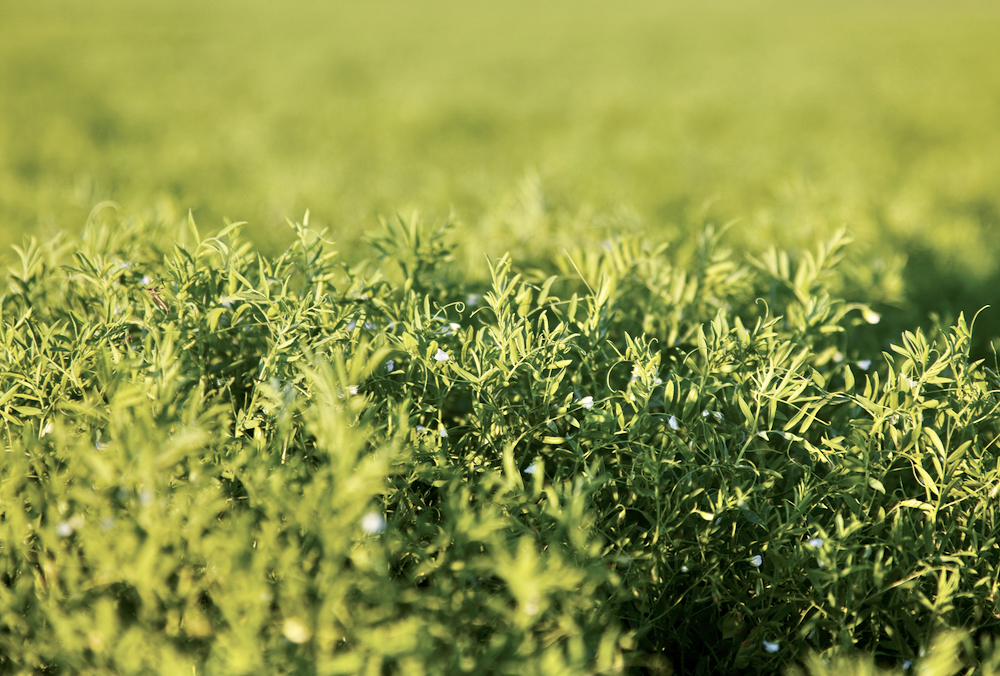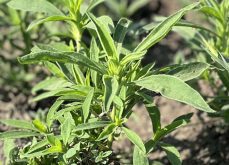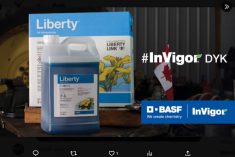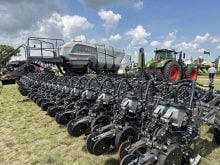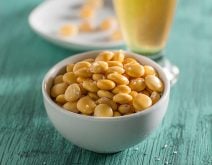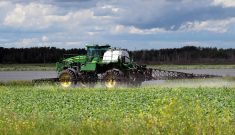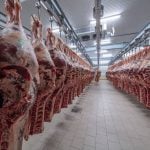Thanks to an expanded label registration, western Canadian lentil growers will have a new tool from Bayer Crop Science for effective disease control in the 2022 crop year.
As of mid-2021, the Pest Management Regulatory Agency (PMRA) expanded the label of a well-established fungicide — Proline Gold — to include anthracnose control in lentils. At the same time, the Proline fungicide label was also expanded to include suppression of the disease.
Last year wasn’t a particularly bad year for the spread of any crop disease, but the expanded label registration will give Prairie farmers another option for controlling the disease, says Rory Cranston, cereal and pulse technical manager at Bayer Crop Science Canada.
Read Also

Claas brings 1000 Series SP forage harvesters to Canada
In mid-August, Claas unveiled its new line of Jaguar forage harvesters at an event in Visalia, California, deep in the heart of that state’s dairy region.
As anthracnose favours warm and wet growing conditions, 2021 wasn’t a runaway year for any type of disease pressure, but Cranston says that doesn’t mean the disease disappears completely. “There is a good chance that fields might have passed the drive-by test (last) year,” he says. “They weren’t seriously affected by the disease, but often with a closer look at plants there was still some infection there.” Cranston says under more ideal conditions, anthracnose can be a very “robust” disease with multiple life cycles infecting crops.
“With the label now including Proline Gold for use in controlling anthracnose in lentils, Prairie producers have an effective fungicide with a different mode of action,” says Cranston, describing it as one more tool in the crop protection toolbox.
Pathogen insensitivity
In recent years, lentil growers and researchers have found that after repeat use of fungicide products based on Group 11 (strobilurin) chemistry, the disease is showing increased “insensitivity” to those products.
Proline Gold has two active ingredients effective against anthracnose, and neither is a Group 11.
“Proline Gold provides effective control with Group 7 (fluopyram) and Group 3 (prothioconazole) chemistries,” says Cranston. It is a good product to use as a follow-up to a Group 11 to control any disease pathogen that may be showing resistance.
He recommends herbicide layering with application of two different products to provide the most effective control against several pulse crop diseases.
For example, he recommends an early application of Delaro 325 SC (Groups 3 and 11 chemistries), which is effective against ascochyta blight, grey mould, white mould (sclerotinia) as well as anthracnose. That treatment can then be followed with a second application of Proline Gold (Groups 3 and 7). It provides sort of that one-two punch against anthracnose including pathogens that may have Group 11 insensitivity.
Along with anthracnose, Bayer also received the registration of Proline for suppression of Botrytis in both lentils and chickpeas. This expansion is complementary to Bayer’s complete pulse fungicide lineup, including Delaro and Proline, offering growers solutions across crops, disease pressure and resistance concerns.
Widespread disease most years
Sarah Anderson, Saskatchewan Pulse Growers (SPG) agronomy manager, says recent disease surveys have shown that anthracnose is the most prevalent disease in lentils across Saskatchewan. Surveys in 2018 and 2019 showed the disease was found in 74 and 92 of surveyed lentil fields, respectively. In 2020, field survey crews inspected more than 1,000 fields, including 68 lentil fields and 41 pea fields in Saskatchewan. Anthracnose was found in 84 per cent of lentil fields inspected.
In 2019, high levels of insensitivity of the anthracnose pathogen to Group 11 fungicides was confirmed in Saskatchewan lentil fields. Testing to confirm this insensitivity revealed a mutation (G143A) that enables the pathogen to have cross-resistance to all Group 11 fungicides. This means that no fungicide active ingredient within Group 11 will provide effective disease control in fields with high levels of insensitivity. (Although the words “insensitivity” and “resistance” are sometimes used interchangeably, plant pathologists prefer to use the term insensitivity to refer to the resistance of the pathogen to a fungicide since the term resistance is typically used to describe the resistance of a host plant to a particular pathogen.)
Anderson says with light to medium disease infection levels, usually showing up at early flowering, the first sign of the disease is usually white spots appearing on lower leaves and stems. The leaflets will wither and fall to the ground, which is premature leaf drop.
“If you start to see lesions on stems and leaves, then the disease has progressed considerably,” she says. And, as with many or most diseases, by the time you see disease symptoms in the crop, it is too late to apply any effective treatment. With anthracnose, the lesions grow and girdle the stem, affecting nutrient supply to the plant. Eventually the disease chokes the plant completely and it dies and falls over.
Anderson says anthracnose is a pathogen that lives on crop residue and can flare up if crop and environmental conditions are favourable. Anthracnose favours frequent rain, high humidity, dense canopy, warm temperatures of 20 to 24 C and a lot of leaf wetness. And, again, depending on conditions, the degree of infection can range from light to severe. With some of the more severe field infections, yield losses can be as high as 50 per cent.
While it is great to have fungicides available, SPG urges farmers to use an integrated approach to prevent or reduce the severity of anthracnose.
The SPG strategies for integrated anthracnose disease management can be found in this document at saskpulse.com.
Additional information on anthracnose in lentils can be found at the SPG website.


